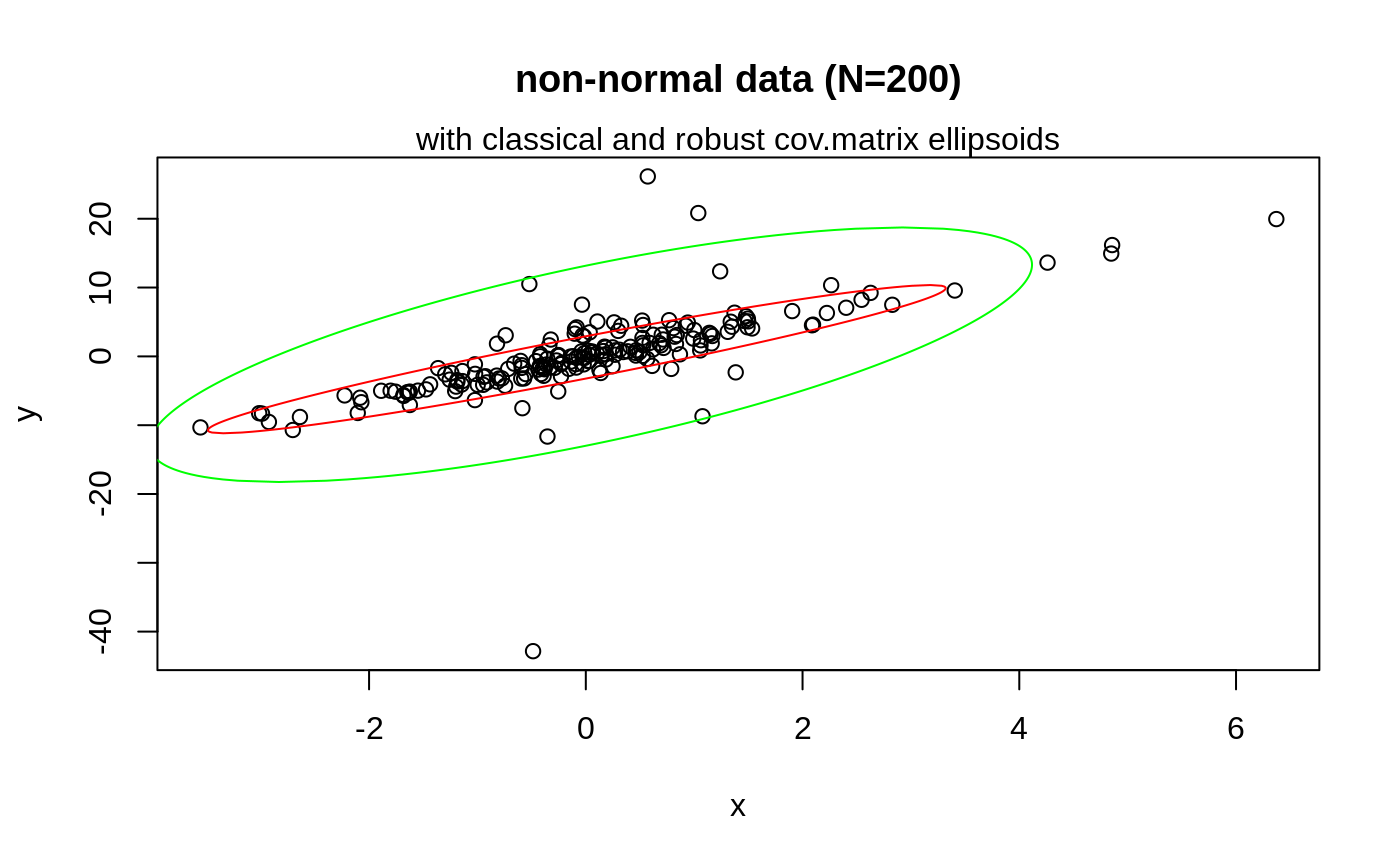Predict Method for Ellipsoid Objects
predict.ellipsoid.RdCompute points on the ellipsoid boundary, mostly for drawing.
predict.ellipsoid(object, n.out=201, ...) # S3 method for ellipsoid predict(object, n.out=201, ...) ellipsoidPoints(A, d2, loc, n.half = 201)
Arguments
| object | an object of class |
|---|---|
| n.out, n.half | half the number of points to create. |
| A, d2, loc | arguments of the auxilary |
| ... | passed to and from methods. |
Details
Note ellipsoidPoints is the workhorse function of
predict.ellipsoid a standalone function and method for
ellipsoid objects, see ellipsoidhull.
The class of object is not checked; it must solely have valid
components loc (length \(p\)), the \(p \times p\)
matrix cov (corresponding to A) and d2 for the
center, the shape (“covariance”) matrix and the squared average
radius (or distance) or qchisq(*, p) quantile.
Unfortunately, this is only implemented for \(p = 2\), currently; contributions for \(p \ge 3\) are very welcome.
Value
a numeric matrix of dimension 2*n.out times \(p\).
See also
Examples
## see also example(ellipsoidhull) ## Robust vs. L.S. covariance matrix set.seed(143) x <- rt(200, df=3) y <- 3*x + rt(200, df=2) plot(x,y, main="non-normal data (N=200)")mtext("with classical and robust cov.matrix ellipsoids")X <- cbind(x,y) C.ls <- cov(X) ; m.ls <- colMeans(X) d2.99 <- qchisq(0.99, df = 2) lines(ellipsoidPoints(C.ls, d2.99, loc=m.ls), col="green")if(require(MASS)) { Cxy <- cov.rob(cbind(x,y)) lines(ellipsoidPoints(Cxy$cov, d2 = d2.99, loc=Cxy$center), col="red") }# MASS#>
